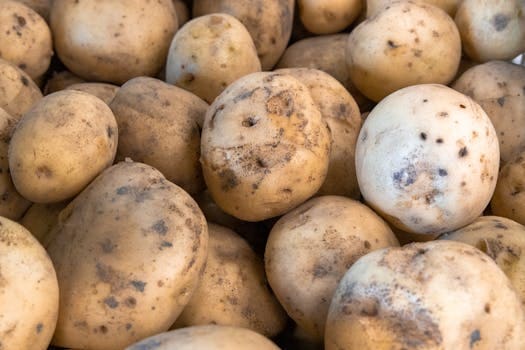The Return of the Kitchen Garden: Edible Estates Trend
The kitchen garden, once a staple in almost every household, has made a comeback in recent years. As more people become conscious of where their food comes from and the benefits of growing their own produce, the trend of edible estates has taken off. These gardens not only provide a sustainable and organic source of fruits, vegetables, and herbs, but they also add beauty and character to any property. In this article, we will explore the return of the kitchen garden and the rise of the edible estates trend.
The Evolution of Kitchen Gardens
Kitchen gardens, also known as potager gardens, have been around for centuries. They were a common feature in medieval monasteries and were later adopted by affluent families during the Renaissance period. The purpose of these gardens was to provide a source of fresh produce for the household, as well as medicinal herbs and flowers. With the rise of industrialization and the availability of store-bought produce, kitchen gardens slowly faded out of popularity in the 20th century.
The Resurgence of Kitchen Gardens
In recent years, the kitchen garden has made a comeback, fueled by the growing interest in sustainability, organic farming, and self-sufficiency. People are becoming more aware of the harmful chemicals used in commercial farming and the impact it has on the environment. By growing their own food, individuals can control the use of pesticides and fertilizers, ensuring a healthier and more environmentally-friendly option.
Another contributing factor to the resurgence of kitchen gardens is the desire for fresh, flavorful produce. Homegrown fruits, vegetables, and herbs have a much shorter distance to travel from the garden to the plate compared to store-bought produce. This means they are picked at their peak ripeness, resulting in superior taste and quality.
The Rise of Edible Estates
Edible estates take the concept of a kitchen garden to the next level. These gardens are more than just a few raised beds in the backyard; they are a complete transformation of the landscape. The entire property becomes an edible landscape, incorporating fruits, vegetables, herbs, and even edible flowers into the design. These gardens not only provide food but also add beauty and character to any property.
One of the main benefits of edible estates is their ability to reduce the carbon footprint. With a traditional lawn, a lot of water, chemicals, and maintenance are required to keep it looking lush and green. In contrast, edible gardens require less water and maintenance, making them a more eco-friendly option. They also provide habitat for beneficial insects, birds, and other wildlife, contributing to a healthier ecosystem.
Getting Started with Your Own Kitchen Garden
Now that you know the benefits of having a kitchen garden, you may be wondering how to get started. The good news is that anyone can have a kitchen garden, no matter how small their outdoor space may be. Raised beds, vertical gardens, and even containers on a balcony can all be used to grow a variety of fruits, vegetables, and herbs.
Start by considering what you like to eat and what grows well in your climate. Herbs such as rosemary, thyme, and basil are easy to grow and add flavor to any dish. Leafy greens like lettuce, spinach, and kale are also simple to grow and can be harvested frequently. As you gain more experience, you can experiment with more challenging crops such as tomatoes, peppers, and squashes.
Final Thoughts
The return of the kitchen garden and the rise of the edible estates trend prove that the love for fresh, homegrown produce is stronger than ever. Not only are these gardens a sustainable and healthier option, but they also bring a sense of pride and satisfaction to the individuals who tend to them. So why not start your own kitchen garden today and join the growing movement towards a more self-sufficient and sustainable way of living.









